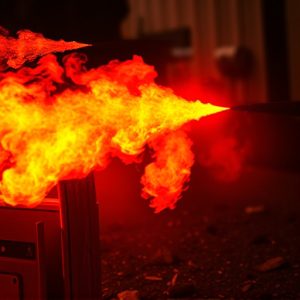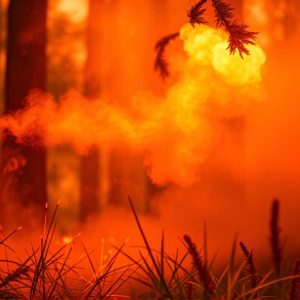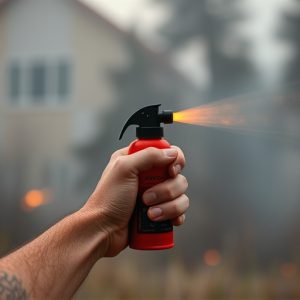Wildfire Pepper Spray for Personal Safety: A Guide to Usage and Legal Aspects
Wildfire Pepper Spray is a non-lethal self-defense tool that uses oleoresin capsaicinoid (OC) to in…….
Wildfire Pepper Spray is a non-lethal self-defense tool that uses oleoresin capsaicinoid (OC) to incapacitate attackers by causing intense pain and irritation upon contact. It is specifically designed for human defense, with a targeted delivery system that minimizes wind drift. Users should practice its use, adhere to local regulations, and consider environmental impact to avoid harming plants and animals. The spray also includes a UV marking dye to help identify attackers post-encounter. As a potent deterrent, it offers a safe alternative to physical confrontation but requires responsible use, understanding of its chemical properties, and proper application techniques within an overall personal protection strategy. It is crucial for users to be knowledgeable about the legal framework governing pepper spray use, as laws vary by jurisdiction, and misuse can lead to serious consequences. Users must have a clear understanding of when it is legally permissible to use Wildfire Pepper Spray, ensuring compliance with local self-defense laws to avoid unintended legal repercussions.
When considering personal protection measures, wildfire pepper spray emerges as a formidable deterrent against potential assailants. This article delves into the intricacies of this self-defense tool, offering readers a deep dive into its mechanisms, effectiveness, and safety profile. We will explore the practical application of wildfire pepper spray in self-defense scenarios, shedding light on its potency and legal standing. Whether you’re seeking to enhance your personal safety or understand the implications of using such a tool, this comprehensive overview will equip you with vital knowledge.
Understanding Wildfire Pepper Spray: A Comprehensive Overview
Wildfire Pepper Spray serves as a potent personal protection tool, harnessing the power of capsaicin derived from natural chili peppers to incapacitate assailants. Unlike traditional fire extinguishers designed for wildfires, this self-defense product is formulated specifically for human attackers. Its effectiveness lies in its ability to cause a strong irritation upon contact with the eyes, face, or skin of an aggressor, leading to immediate loss of sight and difficulty in breathing, effectively deterring an assault without causing permanent harm. The spray’s delivery system is engineered to deliver a concentrated burst of the active ingredient, ensuring a wide range of protection while minimizing wind drift for precise deployment. It’s crucial for users to familiarize themselves with the operation of Wildfire Pepper Spray, including proper aiming techniques and understanding its limitations. Regular practice and adherence to state and local laws regarding self-defense sprays are essential for effective use in a critical situation. Furthermore, the spray is often accompanied by UV marking dye to aid law enforcement in identifying and apprehending the assailant post-incident, emphasizing its role as a complementary tool within a broader personal safety strategy. Users should also be aware of the environmental impact and ensure that the spray does not come into contact with flora or fauna, as it can cause harm. Understanding Wildfire Pepper Spray requires not only knowledge of its chemical components and deployment mechanisms but also an awareness of its role within a comprehensive personal protection plan.
Effectiveness and Safety Considerations of Wildfire Pepper Spray for Personal Protection
When considering personal protection against potential threats, wildfire pepper spray emerges as a highly effective non-lethal deterrent. Its active ingredient, oleoresin capsaicinoid (OC), is a proven irritant that incapacitates an attacker by causing intense pain and inflammation in the eyes, respiratory system, and skin. The effectiveness of this self-defense tool lies in its ability to deliver a powerful dose of OC at a safe distance, allowing users to defend themselves without the need for physical confrontation.
Safety considerations are paramount when using wildfire pepper spray. It is crucial to understand the product’s limitations and proper usage to ensure both personal safety and compliance with legal standards. The spray should be used only in situations where personal safety is at risk, as it can cause serious harm. Users must also be aware of environmental factors such as wind direction, as the spray could unintentionally affect bystanders or pets. Training on how to deploy the spray accurately and understanding its effects are essential steps for safe and effective use. Additionally, users should always follow local laws and regulations regarding the use of pepper sprays in self-defense situations. Proper storage away from children and extreme temperatures ensures the spray remains potent when needed most.
Practical Use and Legal Implications of Wildfire Pepper Spray in Self-Defense Scenarios
When considering personal protection against potential threats, Wildfire pepper spray emerges as a viable option for self-defense. Its potency is undeniable, with formulations designed to incapacitate an assailant by causing intense irritation to their eyes and respiratory system. The effects are temporary but significant, giving the user a window of opportunity to escape from harm’s way. Users should be well-versed in its deployment mechanisms, which typically involve aiming the spray directly into the attacker’s face from close range, ensuring its effectiveness.
However, it is imperative to navigate the legal implications surrounding the use of Wildfire pepper spray. While self-defense laws vary by jurisdiction, the legal framework often allows for the use of such sprays when there is a reasonable perception of an imminent threat. Users must be aware that any use of pepper spray outside of these parameters may result in legal consequences. It is crucial to understand and adhere to local regulations regarding the purchase, possession, and use of pepper spray. In many places, it is illegal to use pepper spray against animals or in a manner that could harm innocent bystanders. Users must familiarize themselves with these laws to avoid unintended legal repercussions. Employing Wildfire pepper spray responsibly within the bounds of the law ensures that individuals can effectively utilize this tool for personal protection when needed most.


